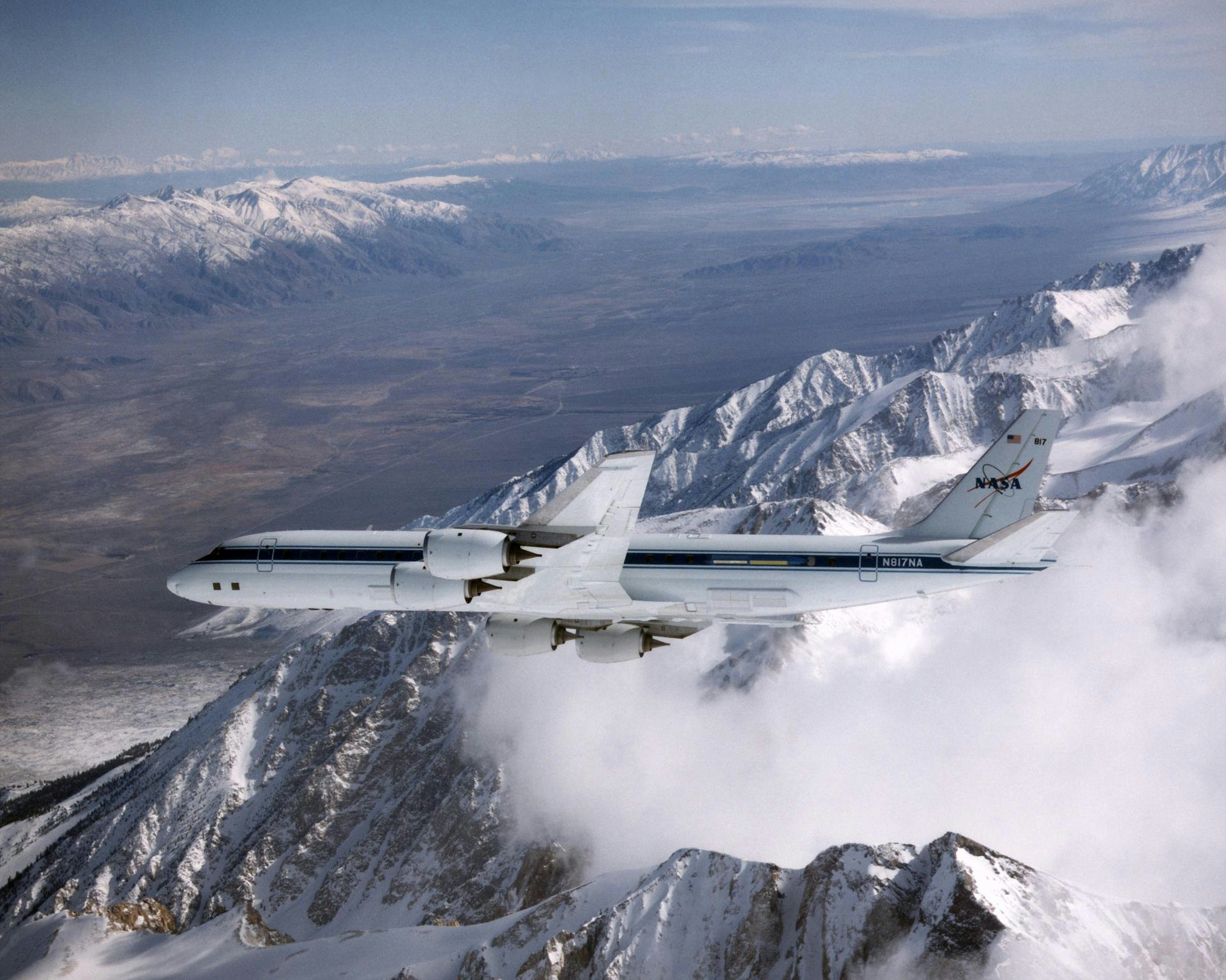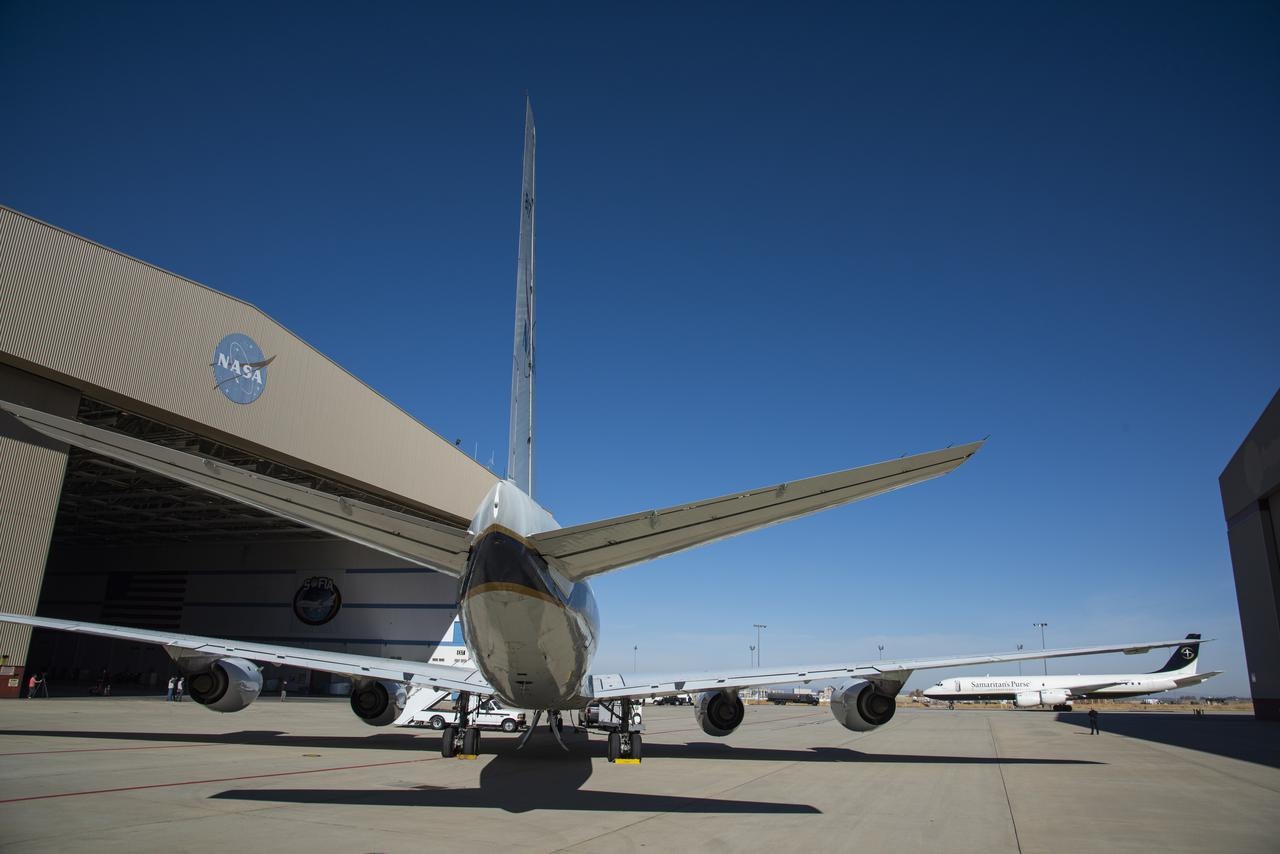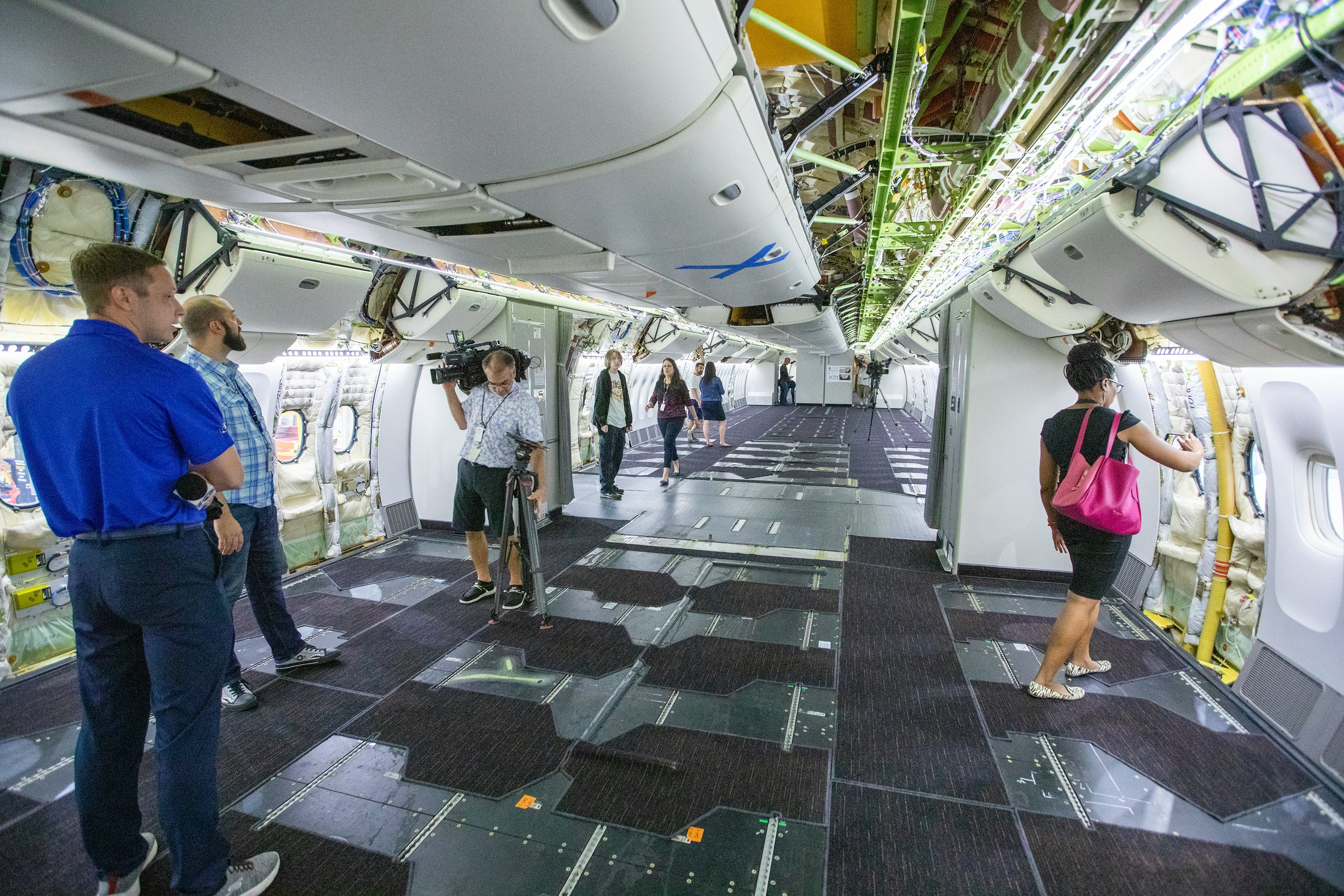
Pour one out for NASA’s large flying laboratory, an old and hardworking DC-8 aircraft that the space and aeronautics agency just retired. The plane came into the world in 1969, the same year that NASA astronauts first walked on the moon during the Apollo era. The agency converted it to be a flying lab after buying the aircraft from Alitalia in 1985 and started using it for missions in 1987, during the space shuttle era. Its final resting place is at Idaho State University, where it will serve as a ground-based training aircraft for mechanics.
But life, and science, keep cruising onward: The plane’s successor is an even bigger aircraft, a modern Boeing 777 that will become NASA’s next flying laboratory. It’s due to start conducting science flights late next year.
“The DC-8 is a special plane,” says Nicki Reid, the aircraft’s operations engineer. “It’s accomplished a lot in its life.” That may be an understatement. There are big shoes to fill to replace what NASA has dubbed “the largest flying science laboratory in the world.”

NASA’s Jack Of All Trades
NASA’s retiring DC-8 carried out many different types of scientific research while airborne. It could fly for as long as 10 or even 12 hours, although Reid says a standard mission would last between six and 10 hours. The flying lab, she says, could hold dozens of instruments — the exact equipment could change based on the mission — and as many as 55 people.
Those instruments were surprisingly versatile. One of the most straightforward things the plane studied was the air it was flying through. Its most recent mission had it measuring air quality in Asia, for example, and it also trailed a Boeing 737 to study its contrails.
It also had a key role in larger scale science. Historically, and probably most famously, it played a key role in studying the recovery of the hole in the ozone layer, a problem that the United Nations said in 2023 was thankfully moving in the right direction after the global ban on ozone-depleting substances. Turning from atmosphere to the ground, from 2009 to 2019, the aircraft studied the thickness of ice in Antarctica as part of a mission called Operation IceBridge.
The plane also acted as a test bed for satellite instruments before they were launched into space. And after they were, it could check to see if they were staying in working order, validating how satellite instruments were doing once they were in space by flying under the satellite’s path, and taking its own measurements, thus allowing researchers to compare those with what the satellite saw.
Using an aircraft to carry out research allows scientists to get an important viewpoint. “We go out and do things on aircraft that we can’t do with satellites or ground-based measurement,” says Amin Nehrir, a research scientist with NASA. We “look at processes in the atmosphere and the surface that are on short-enough time scales that we can’t see them from space — because from space, we sample them once a day, or maybe once every 16 days — and from the ground, we only have one data point in one location. And so the aircraft allows us to bridge these spatial and temporal scales.”
Nehrir highlights one particular instrument on the aircraft: an ozone lidar called DIAL, which employs lasers to measure what’s going on with the air outside the plane. It “was integral to finding the ozone hole,” he says.

Time for Retirement
Operating an old plane like the DC-8 — a four-engine type of passenger aircraft that Delta Air Lines, for example, flew between 1959 and 1989 — came with a cost. “It was getting hard to maintain,” says Reid. “We had to buy our tires custom-made, we had to buy brakes custom-made, and those get expensive when you’re a customer of one.”
Besides that, on board the DC-8, the climate situation wasn’t exactly perfectly temperature controlled. “It’s rarely a pleasant flight,” Reid says. And it was loud, too. “We took out a lot of the insulation, so that we could have access to a lot of the wiring running through the walls, so we can hear the engine noise quite a bit,” she says. Noise-canceling headphones with a built-in communications system helped with that issue.
The old-school nature of the aircraft compels Carrie Worth, a NASA Gulfstream pilot who has also flown the DC-8, to compare it to a “dump truck with wings.” That’s because it was a very hands-on aircraft to fly and had little automation, the equivalent of an older car that requires you to manually roll up or down the windows instead of pushing a button.

What’s Next
The new aircraft is a Boeing 777 that, like the DC-8, used to be a passenger airliner. A widebody plane with two engines built in 2003, this 777 was owned by Japan Airlines before NASA bought it. Right now, the aircraft is having work done on it in Louisiana.
Its mission, says Glenn Jamison, who directs the Research Services Directorate at NASA, will be “understanding our Earth.”
As a successor to the DC-8, the new aircraft “brings a significant increase in the capacity,” Jamison says. “It also brings a significant increase in reach and endurance.” That means it can go farther and stay in the air for longer — as long as 18 hours.
This is one factor that’s important for doing science. “How long can you stay over an area and take measurements that are not broken by having to return to base?” says Jamison. That’s why an aircraft that can stay in the air for a long time is useful for scientists. It is being designed to be able to carry some 100 researchers, he says. And students may be able to fly on it someday, through a program called SARP.
NASA does have other research aircraft at its disposal, such as Gulfstream jets, a P-3 Orion, and two ER-2s, which are similar to the Air Force’s U-2 aircraft and can soar as high as 70,000 feet.
But the DC-8’s end of life comes, as The New York Times reports, as a trio of important NASA satellites — Terra, Aqua, and Aura — are nearing the end of their lifetimes, too. Satellites and research aircraft work well together, because the aircraft can essentially check the satellite’s work.
“The aircraft will never be able to pick up the slack from a satellite — because the satellite is 24/7, it’s global,” says Nehrir. When NASA loses satellites, he says, another aspect that gets lost is the way the plane works with them. “We typically go do these science investigations within the context of the satellite measurements — so we place the aircraft under the satellite, so that we can understand how to better interpret the satellite measurements, how to calibrate and validate them, and so we lose that component once the satellites turn off.”
In regard to the sunsetting of the three satellites, a NASA representative says that other existing instruments, such as SAGE on the International Space Station and a Canadian instrument on a Swedish satellite, can study the atmosphere and that they’re also looking into a proposal called STRIVE. Among other tasks, STRIVE would focus on studying the state of the ozone layer.
Whatever the future may hold, there’s no doubt that one 55-year-old DC-8 has done its part for science as the little flying laboratory that could.







